Introduction
In the heart of Andalusia, where the verdant stretch of olive groves meet the calm flow of the Guadalquivir River, lies the enchanting city of Baeza. Framed by the imposing mountains of Cazorla and Sierra Mágina in the distance, Baeza presents a rich tableau of monumental splendor, a compact yet profound testament to the epochs that have rolled across its landscape. A visit to this city is akin to stepping into a living tapestry, where every stone and every vista narrate tales of history, art, and the illustrious figures that once roamed its streets.
Often, the untrained eye may label Baeza as Meseteña or Manchega, misled by the common illusion of Andalusia as a singular entity characterized by its flat terrains, whitewashed walls, Moorish echoes, and coastal allure. Yet, Baeza stands as a sterling exemplar of another equally enriching facet of this diverse region – the essence of its inland territories. Despite its slight Castilian demeanor, which may stem from its geographical proximity to the northern realms, Baeza remains, at its core, a quintessentially southern, Andalusian gem. One glance at the expansive sea of olive trees that cradle the city, a brief interaction with its warm, congenial populace, or a moment spent basking in the vibrant allure of its spring, is sufficient to appreciate the Andalusian spirit that courses through Baeza’s veins.
The aesthetic allure of Baeza is not merely confined to its natural surroundings. It is the city’s remarkable Renaissance heritage that lends it a distinctive character, placing it on the map as a destination where artistry from the bygone eras melds seamlessly with the bountiful beauty of Jaén’s olive clad countryside. This artistic legacy, immortalized in the meticulous stone carvings, the grandiose edifices, and the quaint cobblestone streets, beckons the discerning traveler to explore further, to delve deeper into the heart of a city where each corner holds a promise of discovery.
The unique blend of Baeza’s architectural grandeur with its serene, pastoral setting creates an ambiance that is both evocative and soothing. It’s a place where the past and the present engage in a gentle dialogue, where the whispers of yore resonate amidst the rustle of olive leaves, where every dawn brings forth a day not just of sunshine, but of a continuous conversation between the ages.
As one traverses the lanes of Baeza, the Renaissance spirit comes alive, almost palpable in the cool morning breeze that carries with it the fragrance of blooming flowers and fresh olives. The city, with its well-preserved edifices, is a living museum, a silent yet eloquent narrator of the times when art and culture flourished under the gentle caress of enlightenment. It’s not just a journey through the annals of history, but a voyage of aesthetic and sensory exploration, a chance to relive the Renaissance amidst the timeless beauty of Andalusia’s olive groves.
In the narrative of Baeza, every element, be it the majestic mountains, the endless olive orchards, the serene river, or the historical monuments, converges to tell a story. A story that is as much about the city’s glorious past as it is about the enduring allure of Andalusia’s inland charm. And as the sun casts a golden glow on the city, accentuating the intricate details of its Renaissance artistry, one can’t help but be swept away by the beauty and the narrative that is Baeza.
Thus, a sojourn in Baeza is more than a mere excursion; it’s an invitation to traverse time, to experience firsthand the seamless melding of nature’s splendor with human artistry. Amidst the silvery leaves of the olive trees, under the gentle gaze of the Andalusian sky, Baeza emerges not just as a city, but as a timeless space where every moment holds the essence of a rich, bygone era.
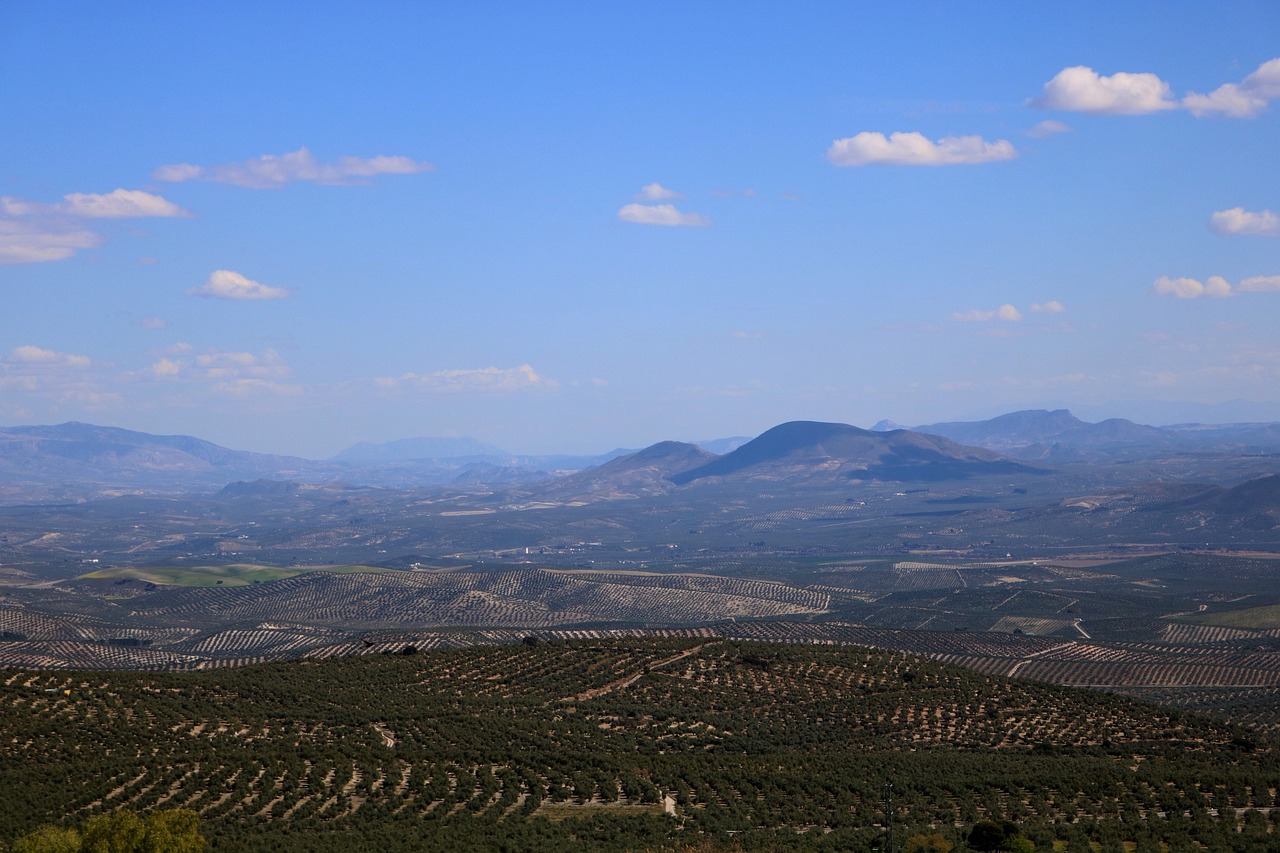
A sturdy urban model
Baeza, with its well-preserved historical essence, echoes a narrative shared by cities such as Trujillo or Cáceres. These cities, situated on the transitional step from north to south, were meticulously forged through the centuries transitioning from medieval times to the dawn of the modern age. The tale is one of gallant struggles against the Moors, of a flourishing agrarian and pastoral society, and of guild-based manufacturing. This unique blend of nobility, clergy, craftsmen, and laborers gave birth to a sturdy urban model. It’s a model evident in the stoic alcázares and watchtowers, strongholds and palaces, churches, and monasteries, alongside the abodes and spaces dedicated to civic life that one encounters while meandering through the quaint streets of Baeza.
The Plaza del Mercado Viejo, or the Old Market Square, stands as the public forum of the city. Flanked by arcades sheltering tranquil cafes behind wide glass panes, the square boasts the classic charm of Spain’s quintessential plazas mayores. Adorning it are galleries such as the Balcón del Concejo and La Alhóndiga, reminiscent of a time where public discourse and commerce intertwined amidst architectural grandeur. Adjacent to it, the cozy square of Fuente de los Leones (Fountain of the Lions) encapsulates the splendors of Baeza. At its heart, surrounded by lion statues, stands the figure of Himilce, wife of Hannibal. This sculptural ensemble hails from the significant Iberian city of Cástulo, the precursor to the Baeza that later became a bishopric and the capital of Upper Andalusia in the twilight of antiquity.
A walk further into the city unveils the twin remnants of the old gate of Jaén and the triumphal arch of Villalar, vestiges of the ancient walls that testify to the Muslim era and the prominence attained by this first great Andalusian urban center reclaimed by Christians. The occupation of Baeza by Ferdinand III in 1226 heralded a turning point, signaling the impending decline of Hispanic Islam.
The architectural tapestry of Baeza is a living testament to the myriad influences that shaped its ethos over the centuries. It’s a blend of religious, military, and civil architecture that tells a tale of a society evolving through the ages, each era leaving its indelible mark on the city’s urban fabric.
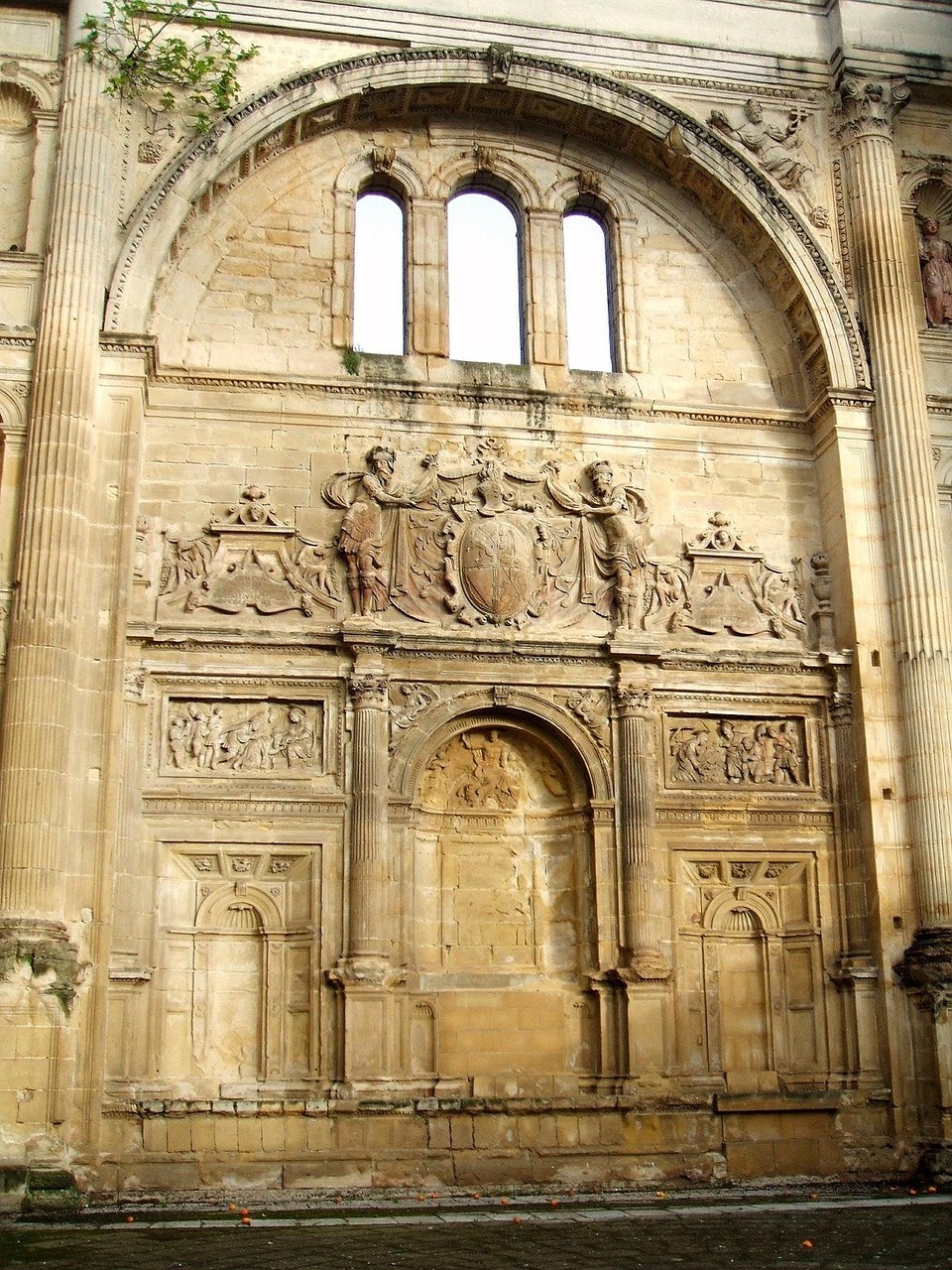
In the silent eloquence of its stone structures, Baeza narrates a story of resilience, of a community that thrived amidst the tides of change, each epoch contributing to the city’s unique architectural and cultural identity. The legacy of its Moorish past intertwined with its Christian heritage, set against the backdrop of an ever-evolving socio-economic landscape, presents a fascinating narrative of a city that is as much a part of the historical tapestry of Andalusia as it is a bearer of its forward-looking aspirations.
As one immerses in the architectural grandeur and the serene ambiance of Baeza, it’s hard not to reflect on the passage of time and the indelible imprints left by each era on this charming city. The essence of Baeza lies not just in its well-preserved historical edifices but in the living legacy of a bygone era that continues to resonate through the bustling squares, the silent alleys, and the cheerful camaraderie of its people.
In the heart of Andalusia, amidst the silvery olive groves, Baeza stands as a poetic ode to the region’s rich history, a silent yet eloquent chronicle of the human endeavor through the ages.
Craftsmanship of local stonemasons
As one delves deeper into the monumental heart of Baeza, the exquisite building of Las Escribanías unveils itself. Adorned with medallions and reliefs, the finesse exhibited by local stonemasons under the guiding light of Renaissance classicism in the 16th century is immediately apparent. However, this is merely the preamble.
The old town of Baeza unfolds a comprehensive architectural repertoire enveloped in an ambiance of tranquility and evocations. Through the Arco del Barbudo (Bearded Arch), the poet Jorge Manrique once entered to aid his kin’s faction in one of the turbulent conflicts that stirred this “royal nest of hawks,” embroiled in both internal strife and warfare against the Moors.
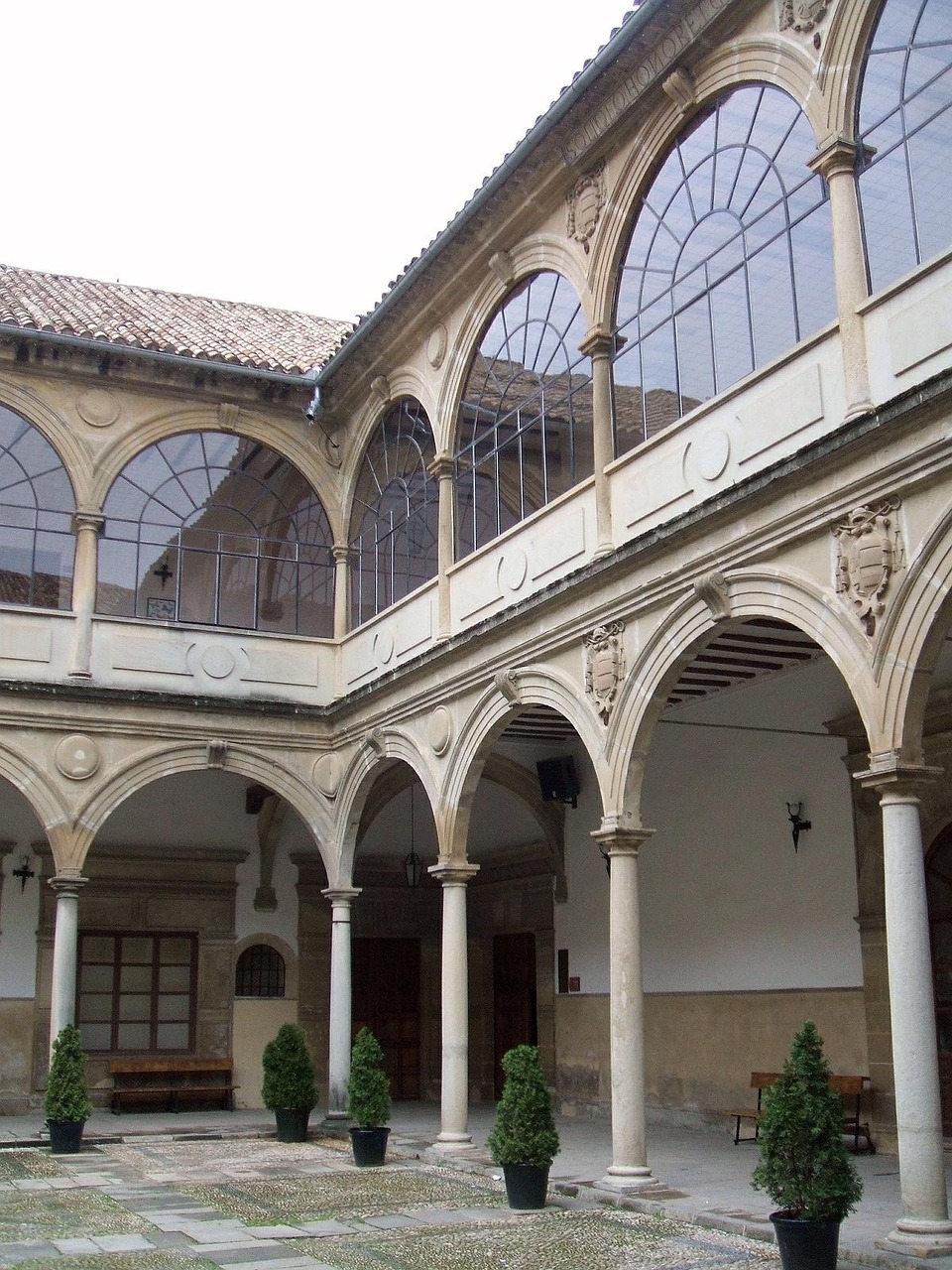
An exceptional crossroad brings together the Church of Santa Cruz – a genuine rarity in Andalusian lands due to its unusual Romanesque layout – the imposing facade of Jabalquinto Palace – a masterful display of stone filigree in flamboyant Gothic taste – and the sturdy edifice of the ancient University. Within its stylized cloister, preserved with the old atmosphere of chalkboard and worn-out desks, lies the classroom where Antonio Machado taught French. Machado, the poet who sought solace for his Castilian sorrows in Baeza between 1912 and 1919, crafted luminous verses imbued with southern themes during these years, “Campo, campo, campo / Entre los olivos / Los cortijos blancos…” (Fields, fields, fields / Among the olive trees / The white farmhouses…).
The narrative of Camilo José Cela resonates as one explores further, he mentioned in his wanderings that “For Baeza, as for Úbeda, the wisest would be to declare them whole and true national monuments just as they are…” His words find affirmation in the Plaza de Santa María. The view here is breathtaking, marked by its magnificent bearing and its staunch unity.
The architectural journey through Baeza is akin to flipping through pages of a richly illustrated book, each structure narrating its own tale, each corner resonating with echoes from the past. The artistic legacy left behind by the local stonemasons of the 16th century is not just a mere collection of structures; it’s a living, breathing narrative that continues to inspire, educate, and evoke a sense of wonder.
It’s a realm where every stone, every arch, and every façade is a testament to the rich cultural and historical tapestry that defines not only Baeza but the broader narrative of Andalusia and Spain. The meticulous craftsmanship, the blend of architectural styles, and the serene ambiance create a harmonious dialogue between the past and present, making a walk through Baeza a walk through time.
The confluence of Romanesque, Gothic, and Renaissance elements reflects the city’s evolution through time, each era leaving behind its indelible mark, contributing to the unique architectural identity that defines Baeza. It’s not just a physical journey but a voyage through the annals of history, an opportunity to traverse through time, and experience the enduring legacy of craftsmanship, culture, and history.
The narrative of Baeza is a narrative of resilience, a tale of a city that stood as a witness to the changing tides of time, each epoch contributing to its enduring architectural and cultural legacy. Amidst the olive groves of Jaén, Baeza stands as a silent narrator of a rich and tumultuous history, its stones whispering tales of yore to those willing to listen.
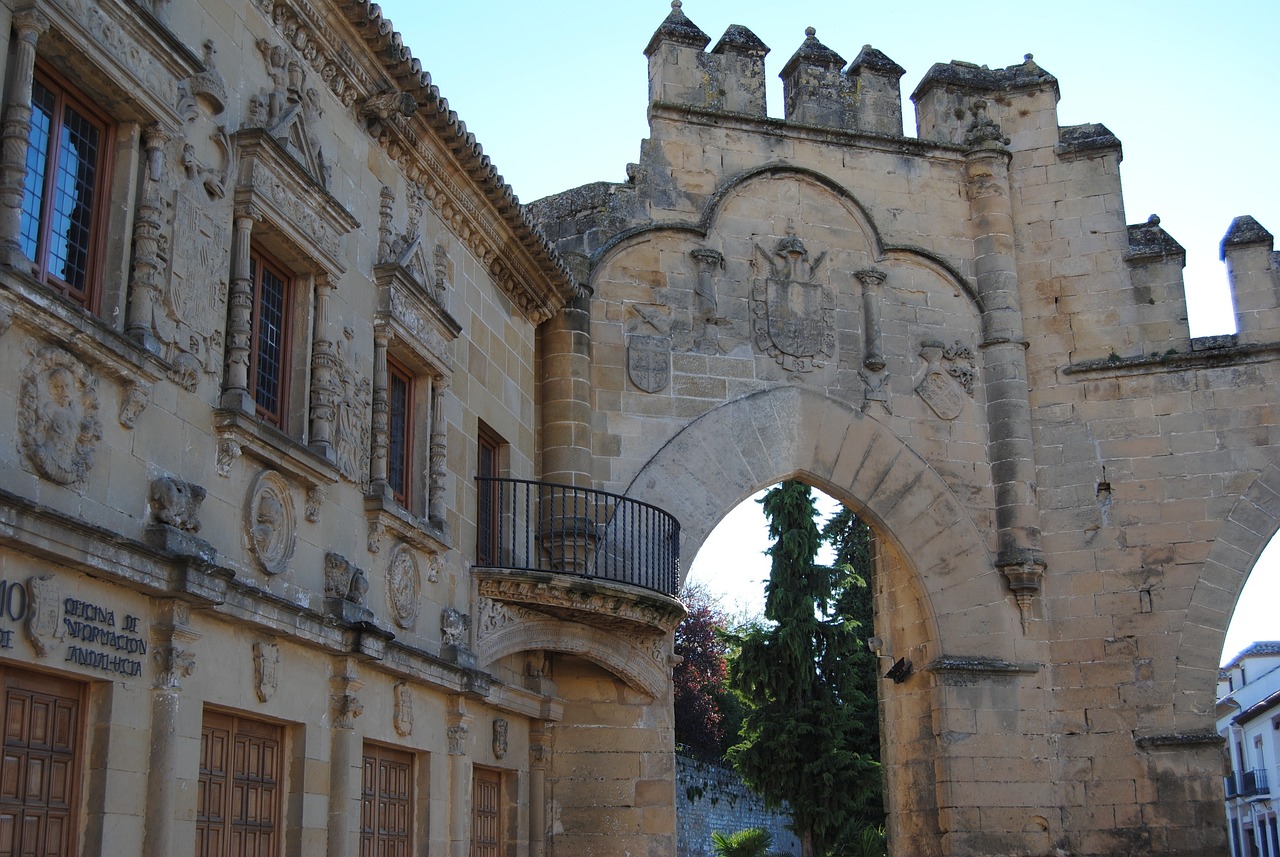
Renaissance geniuses
Nestled amidst the quaint charm of Baeza, stands the seminary, its walls adorned with reddish graffiti etched by students from centuries past. At the core of this historic milieu is a charming fountain, likened to the “scale model of a triumphal arch,” crafted by a master plumber. Towering above on a pedestal is the cathedral, erected on the vestiges of an ancient mosque. This monumental work saw the pioneering genius of Spanish Renaissance stalwarts like Andrés de Vandelvira and Juan Bautista Villalpando. The former was a seminal renovator of his time, known for his radical interpretation of space and the noble stylization of forms.
Andrés de Vandelvira’s architectural narrative was a transition from the medieval Gothic tradition to a modernized perspective, embracing the innovative essence of the Renaissance. His vision transcended the conventional, embodying a finesse and sophistication that resonated with the zeitgeist of the Renaissance era. His meticulous attention to detail, harmonious proportions, and the fluidity of design echoed a new architectural lexicon that was to define the essence of Spanish Renaissance.
Juan Bautista Villalpando, on the other hand, was known for his ecclesiastical architectural endeavors, blending theological and architectural principles. His work was a testimony to the synergistic relationship between divinity and design, a harmonious amalgam that spoke volumes about the spiritual and aesthetic ethos of the time.
The cathedral in Baeza is not just a religious edifice but a monumental testament to the transformative spirit of the Renaissance era. The genius of Vandelvira and Villalpando is encapsulated in the stones, arches, and altars, narrating a tale of aesthetic transcendence and architectural innovation. The cathedral stands as a testament to a time when architecture was not merely a craft but a divine endeavor, a medium to transcend the earthly realm and touch the sublime.
The essence of Renaissance, the quest for perfection, the synthesis of the old with the new, and the harmonious blend of form and function, is epitomized in the architectural legacy that these maestros left behind. Their work is a journey through the annals of architectural evolution, each stone, each arch, resonating with the ethos of a time when the boundaries between the earthly and the divine were explored through the medium of architecture.
The narrative of Baeza’s cathedral is a narrative of a time when the spirit of Renaissance pervaded every aspect of life, from art to architecture, from the sacred to the secular. It’s a tale of human endeavor to reach for the sublime, to explore the unknown, to redefine the known, and to create a legacy that would echo through the corridors of time.
Amidst the olive groves of Jaén, the cathedral in Baeza stands as a silent sentinel, a bearer of tales from a time when the spirit of Renaissance breathed a fresh lease of life into the mundane, propelling a civilization into an era of enlightenment and aesthetic transcendence. It’s a voyage through time, an exploration of the genius of the maestros who dared to dream, to innovate, and to create a legacy that continues to inspire awe and wonder.
As one traverses through the quaint streets of Baeza, the whispers of the Renaissance geniuses echo through the corridors of time, each stone, each edifice, a testament to the indomitable spirit of innovation, creativity, and the quest for perfection that defined the essence of the Renaissance era in Spain.
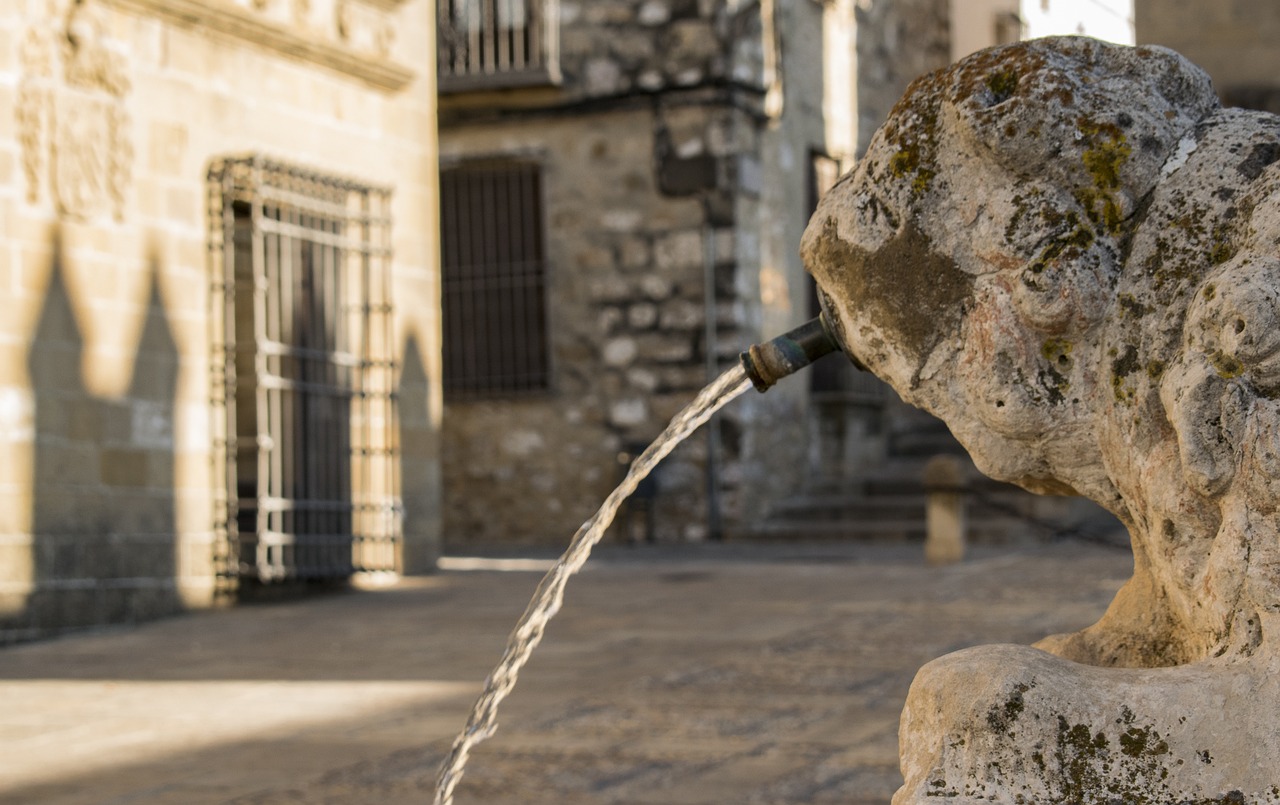
Florentine breezes in Jaén
In the quaint realms of Baeza and its neighboring Úbeda, the artistic paradigms from Italy found their unambiguous expression, sculpted in noble stone as demanded by the classic canon. The bounty and allure of public edifices, churches, convents, and palaces extend and multiply across Baeza with emblematic pieces such as the ancient jail and the Casa de Justicia – the current Town Hall – whose prodigious facade is adorned with plateresque reliefs. Above all, stands the Church of San Francisco, albeit partially truncated by historical vicissitudes, as a bravura display of architect Vandelvira’s spatial wisdom; it underpins a significant portion of the Andalusian Renaissance. The church was envisioned to serve as the funerary chapel for Diego de Benavides, Vandelvira’s patron.
The artistic reverberations from Florence found a new home in the heart of Jaén, as if the olive groves were infused with a breath of Renaissance air. The artistic tenets from Italy were not merely replicated but were reinterpreted, molded, and integrated into the local fabric by the gifted hands of Spanish artisans and architects like Vandelvira. The result is a captivating blend of Italian Renaissance aesthetics with the native architectural vernacular.
The meticulous craftsmanship and the quintessential Renaissance pursuit of balance, proportion, and aesthetic harmony are manifest across Baeza’s architectural landscape. The Casa de Justicia, with its plateresque reliefs, narrates a tale of aesthetic endeavors that sought to encapsulate a higher ideal of justice and civic virtue in stone.
Yet, the pièce de résistance is arguably the Church of San Francisco, a monument that resonates with the genius of Vandelvira’s architectural foresight and spatial ingenuity. Though time has left its mark, the church stands as a monumental testimony to the enduring legacy of the Renaissance spirit. It was here that the aspirations of a local patron, Diego de Benavides, intertwined with the genius of a master architect, giving birth to a sacred space that transcended the mundane, reaching for the divine.
The narrative of the church is emblematic of the broader narrative of Baeza and Úbeda, where the Renaissance was not just an architectural or artistic movement but a cultural renaissance that reflected a broader societal aspiration towards enlightenment, knowledge, and aesthetic transcendence.
Amidst the ancient stones of Baeza, one can almost hear the whispers of the masters from Florence, mingling with the murmurs of local artisans in a harmonious dialogue that transcends time. It’s a dialogue that continues to resonate with every visitor who traverses the charming streets of Baeza, with each step, a step back in time to an era of artistic flourishing and intellectual blossoming under the warm sun of Andalusia.
The legacy of Florentine aesthetics, melded with the indigenous mastery of local architects, has left an indelible mark on the face of Baeza, crafting a unique architectural narrative that continues to captivate the hearts and minds of those who venture through the portals of this historic town.
Don’t miss It – Art, stone, water, and olives
Baeza undoubtedly stands as a pinnacle of Jaén’s historical and artistic splendor. The numerous civil and religious buildings scattered across this city testify to its monumental heritage. Moreover, its surroundings and ambiance further accentuate this grandiosity. Baeza’s cozy bars and hearty kitchens, the craftsmanship showcased in local shops, encapsulating a spectrum of traditional manufactures, and the scenic stroll along the Murallas walkway, etched on the edge of La Loma, add vibrancy and substance to the sumptuous setting. Below, the son of Guadalquivir, the dark green of olive legions gently sways. Nearby, almost within reach, the sister city of Úbeda beckons, though that’s a story for another day.
Around Baeza lies Canena, a charming village dominated by the splendid Renaissance castle-palace of Don Francisco de los Cobos. The Ermita de la Yedra, also of Renaissance style, stands amidst a lush setting, dedicated to the patrons of Baeza. The Olive Oil Museum, housed in the ancient halls of Hacienda de la Laguna Grande, hosts the principal olive oil museum of Andalusia. Laguna Grande, the most extensive lake formation in Jaén, features an ornithological station facilitating the exploration of this natural site and the observation of its rich birdlife.
Renaissance castles
A visit to the nearby castles of Sabiote, Canena, and Torreperogil is well worth it, manifesting the idea of defense and settlement on this frontier and fortified land, as Jaén was in the past. Sabiote Castle embodies all the characteristics of a Renaissance fortress, while that of Canena reminisces the Granadian castle of Calahorra. The architect Andrés de Vandelvira, responsible for both constructions, fulfilled the commission made by the patron Francisco Cobos in the mid-16th century. Lastly, Torreperogil Castle stands out with its two beautiful towers.
These Renaissance castles are not merely stone structures but narrate tales of a bygone era, where architectural finesse met with military precision in a land once rife with frontier skirmishes. Each stone, each turret, bears witness to the legacy of a region intertwined with the annals of Spanish history.
The journey through Baeza and its neighboring landscapes is akin to flipping through the pages of a living history book. Each architectural marvel, each ripple in the olive groves, and each reflection on the tranquil waters of Laguna Grande tells tales of epochs past, of cultural exchanges, of the indomitable spirit of a land that has embraced and nurtured art and history in its bosom.
Amidst the whispers of ancient stones, the serenity of olive groves, the tranquil waters, and the echoes of Renaissance masterpieces, Baeza invites you to traverse through time, to immerse in a rich tapestry of art, culture, and history, awaiting discovery at every corner. From the bastions of age-old castles to the quiet murmurs of the Guadalquivir, Baeza is more than a city; it’s a living ode to the timeless interplay of nature, art, and history.
A renaissance echo amidst olive groves
As the narrative threads of Baeza’s rich tapestry unravel, one is left with a profound sense of having traversed through epochs that shaped not only this quaint city but also the broader contours of Andalusia’s and Spain’s historical and cultural landscapes. The quaint and picturesque town of Baeza, nestled amidst the sprawling olive groves of Jaén, stands as a testament to a bygone era of Renaissance brilliance interwoven with enduring Andalusian traditions.
The architectural grandeur showcased in the city’s numerous edifices, emanating from the minds of Renaissance pioneers like Andrés de Vandelvira and Juan Batista de Villalpando, resonates with the nuanced narratives of a region at the cusp of medieval and modern eras. Each stone, each facade, and each archway in Baeza narrates tales of artistic endeavors, religious fervor, and societal evolution, reflecting a vibrant tapestry of life during the Renaissance period.
Moreover, the tranquil ambiance of Baeza, accentuated by its verdant olive groves, serene rivers, and the placid Laguna Grande, provides a soothing counterpoint to the city’s monumental legacy. The whispers of the past are not just etched in stone but are carried by the gentle breeze through the olive branches, across the quiet waters, and along the ancient walkways.
The neighboring landscapes, with their Renaissance castles and picturesque villages like Canena, further enrich the narrative, adding layers to Baeza’s historical and cultural milieu. The sisterly bond with Úbeda, the Renaissance twin, amplifies the allure of this region, beckoning the curious to delve deeper into the annals of Spain’s Renaissance era.
As we reflect upon the journey through Baeza’s cobbled streets and beyond, it’s not just about revisiting the past, but experiencing the living history that continues to shape the present. Baeza, with its Renaissance heart, beats in rhythm with the timeless, enduring spirit of Andalusia, offering a captivating blend of history, art, and natural beauty.
In the stillness of Baeza, echoes of the Renaissance continue to reverberate, inviting one and all to step back in time, to embrace the artistry, the heritage, and the natural allure that is quintessentially Baeza.





